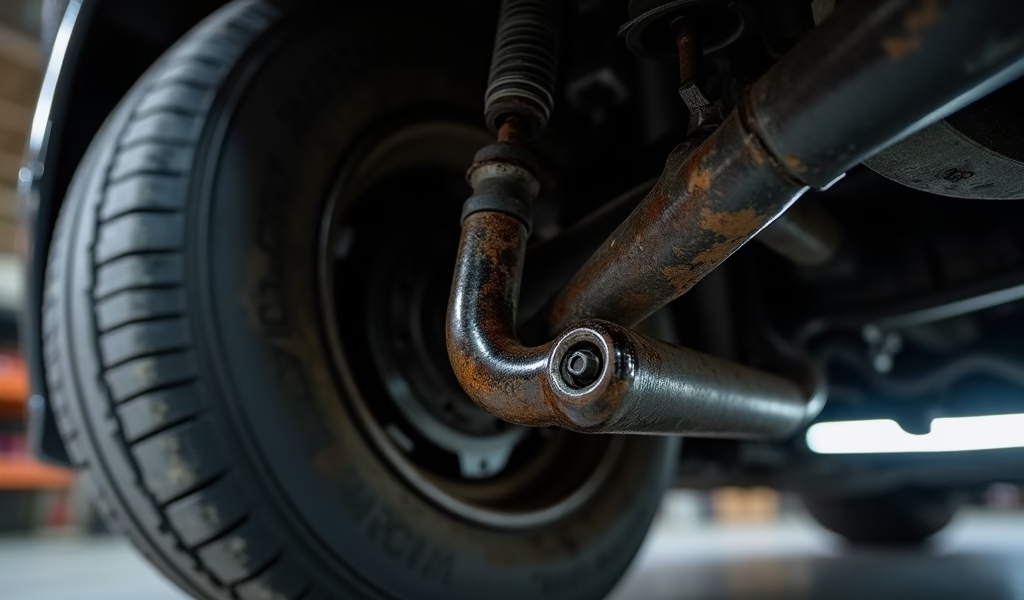Overview
This guide provides five expert tips for working with camber adjustment cam bolts, covering proper installation techniques, precision measurement methods, correct torque application, troubleshooting common challenges, and performance upgrade options. Proper camber alignment is essential for optimal handling, preventing uneven tire wear, and enhancing overall vehicle performance, with specialized adjustment bolts allowing for precise fine-tuning of wheel geometry without expensive modifications.
Table of Contents
- Understanding Camber Adjustment Cam Bolts
- Why Proper Camber Alignment Matters
- Pro Tip 1: Proper Installation Techniques
- Pro Tip 2: Measuring for Precision
- Pro Tip 3: Maintaining Proper Torque
- Pro Tip 4: Addressing Common Challenges
- Pro Tip 5: Upgrading for Better Performance
- Conclusion
- Frequently Asked Questions
Understanding Camber Adjustment Cam Bolts
If you’ve ever noticed your tires wearing unevenly or your vehicle pulling to one side, you might be dealing with a camber alignment issue. Camber adjustment cam bolts are essential components that allow mechanics to fine-tune your vehicle’s wheel alignment. As a professional who’s spent years working with these specialized fasteners, I can tell you they’re absolute game-changers for achieving proper wheel geometry.
A camber adjustment cam bolt features an offset shoulder or eccentric washer that, when rotated, shifts the position of suspension components. This clever design allows technicians to adjust the camber angle—the inward or outward tilt of your wheels when viewed from the front. Unlike standard bolts, these specialized fasteners provide the ability to make precise adjustments without requiring expensive aftermarket parts or modification to your vehicle’s chassis.
The beauty of camber adjustment bolt kits lies in their simplicity. By replacing factory bolts with these adjustable alternatives, you gain the ability to correct alignment issues that affect handling, tire wear, and overall vehicle performance. Whether you’re restoring factory specifications after installing lowering springs or dialing in the perfect stance for track day, these humble bolts make a world of difference.
Why Proper Camber Alignment Matters
Let’s talk about why getting your camber right is so important. Improper camber alignment isn’t just about looks—it directly impacts how your vehicle handles and how quickly your tires wear out. When your wheels tilt too far inward (negative camber) or outward (positive camber), the tire contact patch changes dramatically.
With excessive negative camber, the inside edge of your tire bears most of the load, creating uneven wear patterns that can ruin a perfectly good set of tires in just a few thousand miles. Conversely, too much positive camber causes the outside edge to wear prematurely. Either way, you’re looking at reduced tire life and compromised handling—neither of which is good for your wallet or your safety.
Beyond tire wear, camber alignment affects your vehicle’s handling characteristics. The right amount of negative camber can improve cornering grip by increasing the tire’s contact patch during turns. This is why performance-oriented drivers often prefer a slightly negative camber setting. However, too much negative camber reduces straight-line stability and can make your vehicle darty or unpredictable on highway drives.
According to research published by the Society of Automotive Engineers, even a one-degree deviation in camber can reduce tire life by up to 15%. That’s why having the ability to make precise adjustments with cam bolts is so valuable—they allow you to dial in exactly the right angles for your driving style and vehicle requirements.

Pro Tip 1: Proper Installation Techniques
Installing camber adjustment cam bolts correctly is crucial for achieving lasting results. First things first: always work on a level surface with your vehicle properly supported on jack stands—never rely solely on a jack! Before removing the factory bolts, mark their position with paint or a permanent marker. This gives you a reference point to start from when installing the cam bolts.
When removing the original hardware, pay close attention to any washers, bushings, or sleeves that might be present. These components often need to be reused with your new cam bolts. Clean all mating surfaces thoroughly and inspect for damage or excessive wear. If you notice deteriorated bushings or sleeves, now’s the perfect time to replace them.
Here’s a step-by-step approach I recommend:
- Loosen but don’t remove the lug nuts while the vehicle is still on the ground
- Raise the vehicle and secure it properly on jack stands
- Remove the wheel and mark the position of the factory bolts
- Before removing the original bolt, note the orientation of any washers or bushings
- Replace one bolt at a time to maintain the suspension component’s position
- Install the cam bolt with the cam lobe positioned at the factory setting initially
- Hand-tighten to allow for adjustment, but secure enough to prevent movement
The key mistake many DIYers make is tightening the cam bolts fully before alignment. This defeats the purpose of having adjustable hardware! Instead, leave them snug but not fully torqued until after you’ve made your camber adjustments. This approach allows the eccentric portion of the bolt to rotate freely when making your alignment corrections.
Remember that shock absorber mounting hardware interacts with these components, so pay attention to the entire assembly. A proper installation creates the foundation for successful adjustment and long-term performance.
Pro Tip 2: Measuring for Precision
Precision is everything when it comes to camber adjustment. While professional alignment equipment provides the most accurate measurements, you can achieve surprisingly good results with some basic tools and careful technique. A quality digital camber gauge is a worthwhile investment if you’ll be performing alignments regularly. These devices typically mount to your wheel and provide readings accurate to a tenth of a degree.
If you don’t have access to a digital gauge, a DIY string method can work in a pinch. This involves stretching string along the side of your vehicle parallel to its centerline and measuring the distance from the string to the top and bottom of the wheel rim. The difference between these measurements can help you roughly calculate your camber angle.
For the most precise measurements, follow these steps:
- Ensure your vehicle is on a completely level surface
- Set tire pressures exactly to manufacturer specifications
- Remove any heavy items from the vehicle that might affect suspension loading
- Take multiple measurements and average the results
- Make small, incremental adjustments rather than dramatic changes
When making adjustments, remember that rotating the cam bolt changes the position of your suspension components. Generally, rotating the bolt head toward the center of the vehicle increases negative camber, while rotating it outward decreases negative camber. The exact effect depends on your specific suspension design, so consult your vehicle’s service manual or factory service information for guidance.
Most vehicles have factory camber specifications that fall between -0.5 and -1.5 degrees, with a typical tolerance of ±0.5 degrees. For everyday driving, aim to get as close to factory specs as possible. Performance applications might benefit from more negative camber, but rarely exceed -2.5 degrees for street use unless you’re willing to sacrifice tire life.
Pro Tip 3: Maintaining Proper Torque
Proper torque is absolutely critical when working with camber adjustment cam bolts. These components connect critical suspension parts and are subjected to tremendous forces during driving. Too loose, and they can shift out of adjustment or even fail catastrophically. Too tight, and you risk damaging threads, stretching the bolt, or crushing bushings.
Always use a quality torque wrench calibrated in the appropriate range for your application. Cam bolts typically require between 70-120 ft-lbs of torque, but this varies significantly by vehicle. Never guess—consult your factory service manual or the bolt manufacturer’s specifications for the exact torque value.
Here’s my proven process for achieving and maintaining proper torque:
- Clean threads thoroughly and inspect for damage before installation
- Apply a small amount of medium-strength thread locker to prevent loosening
- Tighten the cam bolts to the specified torque only after final adjustment
- Mark the final position with paint to detect any movement
- Recheck torque after 50-100 miles of driving
- Perform periodic inspections during routine maintenance
The initial setting period is crucial. After making your adjustments and torquing the bolts to specification, take the vehicle for a short drive and then recheck the torque and alignment. Suspension components often “settle” slightly after installation, which can affect your carefully dialed-in settings.
When working with the multi-link rear suspension alignment systems found in many modern vehicles, proper torque becomes even more critical. These complex systems rely on precise relationships between multiple components, and improper torque can throw off the entire geometry.

Pro Tip 4: Addressing Common Challenges
Even with the right tools and techniques, you might encounter challenges when working with camber adjustment cam bolts. Rust and corrosion are common enemies, especially in regions where road salt is used. If you’re struggling with seized bolts, apply a quality penetrating oil and give it time to work—patience pays off here. Sometimes gentle heat from a propane torch can help break the bond of corrosion, but be careful not to overheat rubber bushings or other heat-sensitive components.
Another common issue is limited adjustment range. Standard cam bolts typically provide about ±1.5 degrees of adjustment. If you need more range—perhaps because you’ve lowered your vehicle significantly—you might need extended-range cam bolts or additional alignment components like adjustable control arms.
Here are some troubleshooting tips for common challenges:
- For seized bolts: Apply penetrating oil, let it soak overnight, and use a breaker bar with steady pressure rather than sudden force
- If threads are damaged: Use a thread chaser or tap to clean and restore them
- When facing limited adjustment range: Consider slotting the mounting holes as a last resort (professional equipment recommended)
- If camber keeps changing: Check for worn bushings, ball joints, or other suspension components
- When alignment shifts after driving: Verify proper torque and consider using serrated washers for added grip
Sometimes, camber issues indicate deeper problems with your suspension system. If you’re unable to achieve proper alignment despite trying different cam bolt positions, investigate for bent components, worn bushings, or damaged subframes. According to Hunter Engineering, a leading manufacturer of alignment equipment, approximately 60% of vehicles on the road need alignment service, often due to unseen suspension damage.
Pro Tip 5: Upgrading for Better Performance
If you’re serious about optimizing your vehicle’s handling, consider upgrading beyond basic cam bolts. Performance-oriented camber adjustment systems offer greater range, finer adjustment capabilities, and enhanced durability. These systems often incorporate high-grade materials like chromoly steel or aircraft-grade aluminum and feature precision machining for exact fitment.
For track enthusiasts or those running aggressive lowering setups, camber plates represent the ultimate upgrade. These replace the upper strut mounts with fully adjustable alternatives that allow for precise camber tuning without the limitations of cam bolts. While more expensive and complex to install, camber plates provide the greatest flexibility for serious performance applications.
Consider these performance-oriented upgrades:
- Extended range cam bolts for lowered vehicles (up to ±2.5 degrees adjustment)
- Eccentric washer systems that provide multi-axis adjustment
- Adjustable control arms for comprehensive suspension geometry tuning
- Camber plates for maximum adjustability and performance
- Adjustable toe links to complement your camber settings
Remember that optimal camber settings depend on your specific driving needs. For pure track performance, more negative camber improves cornering grip but accelerates tire wear. For daily driving, moderate settings closer to factory specifications provide the best balance of handling, stability, and tire longevity.
When upgrading, quality matters immensely. I’ve seen countless cheap cam bolts fail prematurely, sometimes with dangerous consequences. Invest in reputable brands known for proper engineering and material quality. The price difference is often minimal, but the performance and safety benefits are substantial.
Conclusion
Mastering the use of camber adjustment cam bolts transforms your approach to vehicle maintenance and performance. These seemingly simple components provide the ability to fine-tune your suspension geometry for optimal handling, even tire wear, and improved driving dynamics. By following the five pro tips outlined in this guide—proper installation, precise measurement, correct torque application, addressing common challenges, and considering performance upgrades—you’ll be well-equipped to tackle alignment issues with confidence.
Remember that alignment is a holistic process. Camber is just one aspect of wheel alignment, working in conjunction with caster and toe settings to determine your vehicle’s handling characteristics. The best results come from understanding how these elements interact and making informed adjustments based on your specific driving needs.
Whether you’re restoring factory specifications after suspension modifications or dialing in the perfect setup for track days, camber adjustment cam bolts give you the control you need. With patience, precision, and the right tools, you can achieve professional-quality results that enhance both the performance and longevity of your vehicle.
Frequently Asked Questions
How much does a camber adjustment cam bolt typically cost?
Quality camber adjustment cam bolts typically cost between $20-$50 per pair. Premium performance versions may range from $50-$100 depending on material quality and adjustment range.
How often should camber alignment be checked?
Camber alignment should be checked annually or after any suspension work, accident, or hitting a major pothole. Regular checks help prevent premature tire wear and handling issues.
Can I install camber adjustment cam bolts myself?
Yes, with basic mechanical skills and the right tools, most DIYers can install cam bolts. However, a professional alignment afterward is recommended for precise adjustment.
How much camber adjustment do cam bolts provide?
Standard camber adjustment cam bolts typically provide ±1.5 degrees of adjustment range. Extended-range versions can offer up to ±2.5 degrees for lowered vehicles.
Will camber adjustment cam bolts fix my uneven tire wear?
If uneven tire wear is caused by improper camber, adjustment cam bolts can help correct the issue. However, tire wear may also result from other alignment parameters or suspension problems that should be diagnosed.

